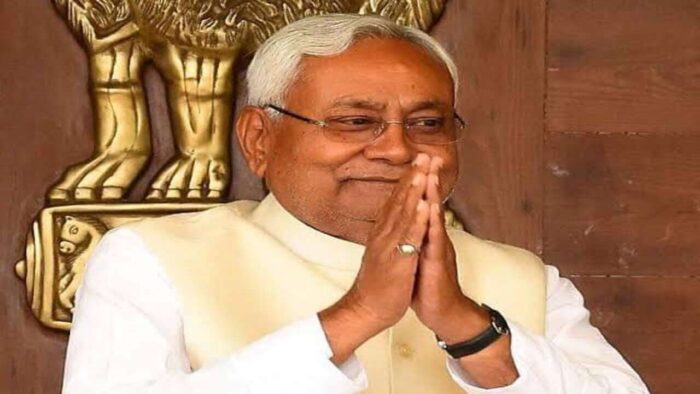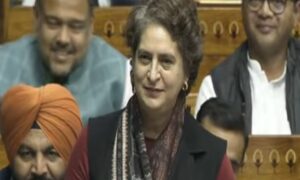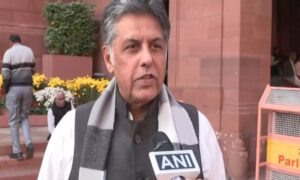
File Picture
Now that the Bihar assembly election 2020 is over and for the first time a BJP led government has assumed office in Bihar, albeit under the leadership of Nitish Kumar of JD (U) ,the” Susashan Kumar’ meaning Mr. Good governance for the 4th term in succession – a record for a Hindi heart land State , the incomplete task of putting Bihar firmly on the development path must receive utmost priority. And the people of Bihar have still a lot of expectations from Nitish Kumar though the margin of victory of the BJP JDU combined was narrow being just about 12000 votes – if one adds up the total no of votes polled in favor of NDA as compared to its main opponent MGB in all seats contested. This indicates that it was perhaps good luck that favoured the NDA. Nevertheless it’s pertinent to remember that the PM Modi referred to Bihar’s continuing presence in the BIMARU Group of states of Hindi heartland still suffering from a complex set of development lags- chiefly unsustainable high population growth and each constraint on development strengthening the other to such an extent that Bihar is unable to reach what Rostow , the American economist called the ” take off ” stage of development , that is, growth on its own motion released by the economy . It may be recalled that the acronym BIMARU was coined by Prof. Ashish Bose , distinguished demographer in the 1980’s to point out that the states of Bihar, MP, Rajasthan and UP were found unable to bring down the rate of growth of population and hence suffered from multiple constraints on development. The Prime Minister Modi therefore hinted that taking Bihar out of the BIMARU syndrome should be the task ahead of the next govt.
However, current status of the political economy of Bihar is still precarious despite all the initiatives taken by Nitish Kumar in the last 15 years ; and no doubt some success was achieved in restoring physical and social infrastructure and growth was high but all these were primarily due to what economists call ” low base effect”, that is ,high growth rate was achieved because the base was very low, but even high rate of growth is not enough to put the state on a sustained growth trajectory which is really the situation even now in Bihar.
This stark reality is evident from the fact that the per capita SDP ( State Domestic Product) of Bihar in 2019-20 is a measly Rs 46664 , that is 34.7% of the national average of Rs 134226 inspite of the high growth achieved by Bihar in the last 10 years and that this ratio has only moved by 0.4% is only explained by the Low base effect. And according to a 2018 World Bank study 35% of Bihar’s SDP is derived from remittances it receives from millions of migrant Bihari workers toiling in other states. The following facts are usually cited by observers of Bihar’s political economy; First, unsustainable high growth of population. Bihar with an estimated population of 12.5 crores of population is the third populous state after UP and Maharashtra and enjoys the dubious distinction of having the highest decadal rate of population growth of 25.4% in 2001-11 as compared to neighboring West Bengal’s 13.8% , Odisha’s 14% and even UP’s figure of 20% of decadal population growth; and no wonder that one third of population is below 14 years of age and the unemployment rate among the youth is the second highest in the country at 31%. Clearly the state policy and program in the family welfare and population stabilisation hasn’t worked. The other sad features of the economy can be attributable to the continuing state failure on the demographic front as summarized below:
Bihar’s state finances are entirely dependent on state’s share of central taxes in the divisible pool as 76% of revenue is derived from this source. . A huge and increasing burden of salary bills of 3.10 lakhs of serving Govt employees and 3.80 lakhs of Pensioners cost the state exchequer roughly Rs 4800crores in every month which leaves little for development.
Urbanization of Bihar is the lowest being only 11.3% as per 2011 census compared to the All India average of 31.3% and lower than Odisha’s 16.69% or 22.27% of UP. As India has opted for an urban- technology led development model since the economic reforms were launched in the 1990’s with higher Urbanization saw higher growth which explains why Biharis constitute possibly the largest segment of interest state migrant workers of the country and suffered most in the recent crisis following “Lockdown” . Low Urbanization is the outcome of the fact that the manufacturing hasn’t picked up at all in Bihar as it contributes only 8.7% to the state GSDP while 75% of people depends on agriculture even when the share of agriculture is only 15% GSDP. This explains massive rural poverty and lack any significant activity” to add value’ to agricultural produce in what we call agro based industry as only 1.5% of factories in India are registered in Bihar. No wonder that fixed capital formation has remained static at 0.6% for over a decade and its share in Foreign Direct Investment is just 0.01% of national average. In 2019 Bihar was ranked 26th in the Ease of doing Business among the states and it enjoys the dubious distinction of being the only state from which not a single company was trading on the Bombay or National Stock Exchange. Private equity or venture capital investment in Bihar really nil. The grim scenario is complete when one notes that 13 out of 38 Districts identified by the Centre as the” most backward” in the country are in Bihar and it is embarrassing to mention the low ranking of Bihar in all socio economic development indicators of the country. And yet the facts such as Bihar’s literacy rate is the lowest among all States/ UTs at 63.8% and also the female literacy at 51.5% which read with the highest proportion of people in the Below Poverty Line – among major states at 33.74% indicate continuing state failure in Bihar regardless of what what had been achieved in the last 15 years under Nitish Kumar.
Where do we go from here ? is a question that must be in the minds of Bihar’s youth today as Tejashwi Yadav’s call for ” Sinchai, Kamai,Padhai and Dawai” meaning literally ” irrigation, jobs, education and medicine” has captured their imagination – a fact tacitly recognized by the BJP led front when it promised creation of 17 lakhs of jobs during the election campaign to counter Tejashwi’s promise of 10 lakh jobs. If they meant govt jobs, this is just not feasible given the precarious nature of state’s finances and the fact that it had been suffering an annual revenue loss of Rs 4500 crores due to its prohibition policy.
And yet the government must deliver ” development” as promised which calls for bold initiatives and a development strategy to synergise the activities of all sectors including the social sector to optimize the outcomes and within a time frame. This could only enable people to experience real progress and not just cosmetic changes as the ” backlogs” are huge and seemingly insurmountable. To put it bluntly it’s the last innings of Nitish Kumar to work out a good score to prove that he is also a” Vikas Purush’ meaning the Development Man. There’s a regional dimension too as no state has really an economy that is not dependent on neighborhood and for far too long Bihar’s stagnant political economy has obstructed the growth of the Eastern region as low effective demand for goods and services in Bihar has constrained expansion of all value added product and service in the whole of the east and north east region. The sad reality is that Bihar is not just under developed , it is what economists call a case of” retarded economy”. It’s time to retrieve the lost ground.
[the_ad id=’22722′]


















